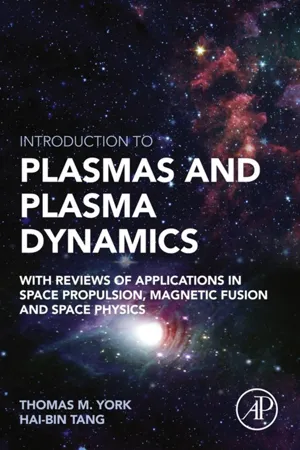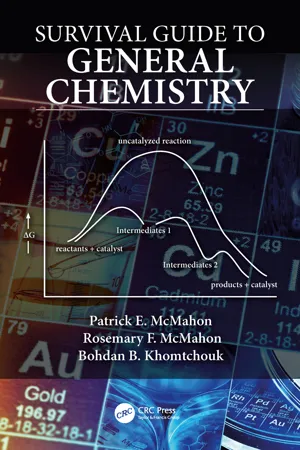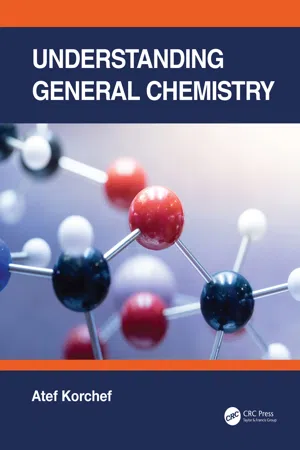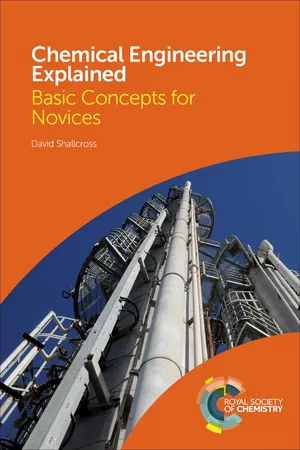Physics
Models of Gas Behaviour
Models of gas behavior are theoretical frameworks used to describe the properties and interactions of gases. The kinetic molecular theory, ideal gas law, and van der Waals equation are common models used to explain gas behavior. These models help scientists understand and predict the behavior of gases under different conditions, such as changes in temperature, pressure, and volume.
Written by Perlego with AI-assistance
Related key terms
Related key terms
1 of 4
Related key terms
1 of 3
8 Key excerpts on "Models of Gas Behaviour"
- eBook - ePub
Introduction to Plasmas and Plasma Dynamics
With Reviews of Applications in Space Propulsion, Magnetic Fusion and Space Physics
- Hai-Bin Tang(Author)
- 2015(Publication Date)
- Academic Press(Publisher)
Chapter 2Kinetic Theory of Gases
Abstract
This chapter begins with a definition of idealized molecular behavior that incorporates classical momentum and energy conservation. The gas laws at standard conditions are derived and explained within this formalism. The transport phenomena of viscosity, conduction, and diffusion are similarly treated. Statistical concepts are introduced to establish a mathematical basis for deriving macroscopic properties. The velocity (Maxwellian) distribution function is derived from physical laws and with the introduction of entropy as an important descriptive variable of state. Average values of molecular speeds are derived. The extension of the ideal molecular model as the basis for describing real gases is discussed.Keywords
Equilibrium distribution function; Kinetic theory; Pressure; temperature, and energy relationships; Transport processes (viscosity, conduction, and diffusion)Introduction
In the study of the mechanics and energetics of fluid flow, normally the fluid is considered to be a continuous medium (continuum), describable by properties such as density, temperature, pressure, and viscosity. For example, energy is defined as C V T 0 . Since the basic problem is that of the interchange of a large amount of energy in and out and fluid systems, we must look at what a fluid is “in the small” (microscopically) as well as “in the large” (macroscopically) so that we can understand what energy “is” (what its forms are), and how it can change when added to or removed from a fluid. The energy exchange is central, and the effects of the energy exchange are secondary.Kinetic theory originated in an attempt to explain and correlate the familiar physical properties of gases on the basis of molecule behavior (perfect gas law as stated for imperfect gases, viscosity, conduction, and diffusion).Basic Hypotheses of Kinetic Theory
Basic Hypotheses (Present, 1958 )
1. Molecule hypothesis—“matter is composed of small discrete units known as molecules: that the molecule is the smallest quantity of substance that retains its chemical properties, that all molecules of a given substance are alike, and there are three states of matter which differ in the arrangement and state of motion of molecules.” - eBook - ePub
- Walter Kauzmann(Author)
- 2013(Publication Date)
- Dover Publications(Publisher)
Chapter 2THE MOLECULAR EXPLANATION OFTHE EQUATIONS OF STATE
SOME IMPORTANT properties of the equations of state of gases have been described in Chapter 1 . We now consider how the equations, as well as other properties of gases, may be understood in terms of the molecular structure of a gas. This matter is dealt with in the so-called kinetic theory of gases. Although the basic assumptions of this theory are simple and plausible, the theory has been highly successful in accounting for the properties of gases, especially at low pressures. Consequently, the low pressure gaseous state is today more thoroughly understood in molecular terms than any other state of matter.It is worth noting that until about the middle of the nineteenth century the generally accepted molecular explanation of Boyle’s law was based on a notion proposed by Newton, who believed that gas molecules are fixed in position and that the pressure of a gas arises because the molecules repel each other. Scientists who followed Newton showed that Boyle’s law would result if the repulsive force between a pair of molecules varies inversely with the distance between the molecules. These scientists realized, of course, that the molecules in a liquid or in a solid are much closer together than in a gas, so that they must for some reason attract one another, but it was felt that when solids or liquids are vaporized, the addition of the latent heat of vaporization (“caloric”) in some way converted this attractive force into a repulsion.2-1 Bernoulli’s theoryThe correct and quantitative basic picture of gas structure goes back to a chapter in the book, Hydrodynamik , by Daniel Bernoulli (1738), but even before this, Gassendi (1658) and Robert Hooke (ca. 1680) had the same idea in qualitative form. Interestingly enough, Bernoulli’s theory was completely overlooked for over one hundred years. In 1821 an eccentric Englishman, John Herapath, independently hit upon a molecular model of a gas that is similar to Bernoulli’s, but his reasons for proposing it now seem to be rather unconvincing. In 1845 John James Waterston, at that time a schoolteacher in Bombay, submitted a paper to the Royal Society in which many of the basic concepts of the kinetic theory were set forth. The paper was rejected as “nothing but nonsense, unfit even for reading before the Society.” Soon thereafter the same ideas were developed in forceful fashion by Joule (1848), Rankin and Kronig (1856), and especially by Clausius (1857), Maxwell and Boltzmann. Bernoulli’s contribution of 1738 was rediscovered in 1859 and the ideas originally proposed by him rapidly gained general acceptance.1 - eBook - ePub
- Patrick E. McMahon, Rosemary McMahon, Bohdan Khomtchouk(Authors)
- 2019(Publication Date)
- CRC Press(Publisher)
20 Working with Gas LawsI KINETIC THEORY OF GASES Phases of a compound or element (solid, liquid, gas) are determined by the balance between the strength of intermolecular forces and the average kinetic energy of the molecules. The gas phase is characterized by very weak attractive forces during which the average kinetic energy of motion dominates the physical properties of gases. For a restricted set of conditions, analysis of a gas is characterized by assuming that attractive forces between individual gas molecules are zero and that the volume occupied by the physical size of the molecules is essentially zero as compared to the volume of empty space between the molecules. Under these conditions, the gas, termed an ideal gas, is analyzed through the average statistical behavior of rapidly moving independent particles.Gases have very low density as there is a relatively large amount of empty space between individual molecules. Gases can have variable volumes; they can expand (molecules become farther apart) or be compressed (molecules are squeezed closer together). The pressure of a gas is produced by the kinetic energy of molecular collisions on the walls of the container. Gases can diffuse into each other; the rapidly moving molecules of two distinct gases can occupy the empty spaces between each other and form a gas solution (mixing at the molecular level).The kinetic energy of a gas molecule (or atom) in units of Joules is found from kE = ½ mv2 where m = the molecular (or atomic) mass in kilograms and v = velocity of the molecule in meters per second. The average kinetic energy of any sample of a specific molecular gas is determined by the molecular mass and the average or mean velocity: kE(average) = ½ m(v(average) )2 ; v(average) ≅ v(mean) - eBook - ePub
- Michael M. Mansfield, Colm O'Sullivan(Authors)
- 2020(Publication Date)
- Wiley(Publisher)
12 Microscopic models of thermal systems: kinetic theory of matterAIMS
- to interpret thermodynamic behaviour in terms of microscopic models
- to explain how the temperature, the internal energy and the heat capacity of a gas may be understood from a microscopic perspective
- to describe how statistical distributions are used in the study of thermal systems (an introduction to statistical mechanics)
- to present a simple microscopic interpretation of the heat capacity of solids
12.1 Microscopic interpretation of temperature
In Chapter 10 we saw that the mechanical behaviour of gases at low pressure, essentially Boyle's law, could be explained by a microscopic model, called the kinetic theory of an ideal gas. In particular, we found (Equation (10.12) ), that the product PV could be written in terms of microscopic quantities as followswhere N is the number of molecules, each having a mass m, in the system and is the average kinetic energy per molecule. Comparing this with the equation of state of an ideal gas as given by Equation (11.14) ,we see that the theoretical treatment of the microscopic model predicts a relationship which has the same general form as the experimentally based equation of state which relates macroscopic quantities. Furthermore, a comparison of the two equations leads us to the conclusion that the macroscopic concept of temperature can be interpreted as a direct measure of the average kinetic energy of the molecules (a microscopic quantity). In other words, we now conclude that(12.1)where k is a constant called the Boltzmann constant (the factor of arises because the Boltzmann constant was originally introduced in a somewhat different context). Historically the value of the Boltzmann constant had to be measured experimentally (for example, see Worked Example 12.2); however, the revised definition of the kelvin (Section 11.2 ) now fixes its value at exactly - eBook - ePub
Physics of Cryogenics
An Ultralow Temperature Phenomenon
- Bahman Zohuri(Author)
- 2017(Publication Date)
- Elsevier(Publisher)
In basic mechanics, the student learns that all two-body problems are solvable analytically, and some three-body problems are also solvable. However, beyond that, many-body problems are very complicated. However, they can theoretically be solved numerically for any given set of conditions that specify the initial position and momentum for all of the bodies involved, the problems become extraordinarily difficult for more than a handful of bodies. If we consider only the simplest of interactions, the collisions of hard spheres, for the molecules in a cubic millimeter of gas at standard temperature and pressure there is no hope of producing deterministic solutions for the ∼1020 molecules that could have any engineering meaning. However, we know that the behavior of a gas under these conditions is predictable and we need only measure a few parameters with relatively crude instruments to describe its condition. The analytic technique that allows us to explain how this is possible is statistical mechanics. We can characterize the hard sphere interactions of many molecules in a statistical manner and derive macroscopic properties, or relations between properties that allow us to predict gas behavior.Keywords
Entropy; Gas; Kinetic theory; Statistical analysis; ThermodynamicsOutline9.1 Some Elementary Microstate and Macrostate Models9.2 Stirling's Approximation for Large Values of N9.3 The Boltzmann Distribution Law 9.4 Estimating the Width of the Most Probable Macrostate Distribution9.5 Estimating the Variation of W With the Total Energy9.6 Analyzing an Approach to Thermal Equilibrium9.7 The Physical Meaning of β9.8 The Concept of Entropy 9.9 Partition Functions 9.10 Indistinguishable Objects 9.11 Evaluation of Partition Functions 9.12 Maxwell–Boltzmann Velocity Distribution ReferencesThis chapter will attempt to provide a physical understanding of the concept of entropy based on the kinetic theory of gases. Entropy in classical thermodynamics is a mathematical concept that is derived from a closed cycle on a reversible Carnot heat engine. For many students it lacks physical meaning. Most students have a physical understanding of variables like volume, temperature, and pressure. Internal energy and enthalpy are easy to understand, if not intuitive. However, entropy is a bit more difficult. The discussion that follows is an attempt to provide physical insight into the concept of entropy at the introductory level. Prof. Leonard K. Nash, Dover Edition, 2006, bases this discussion on the excellent text, “Elements of Statistical Thermodynamics.”1 For further information and education reader should refer to Refs. 2 –4 - eBook - ePub
- Jeffrey Gaffney, Nancy Marley(Authors)
- 2017(Publication Date)
- Elsevier(Publisher)
These assumptions define ideal gases. So, deviations from ideal behavior become important when kinetic energy is lost in collisions, when molecular volume is significant compared to the volume of the container, and when intermolecular forces become important.Gases do not behave ideally at very low temperatures because the molecules move relatively slowly allowing for the effects of intermolecular forces to increase. Gases also do not behave ideally at high pressures because the gas molecules are closer together at high pressures. This makes the volume occupied by the gas molecules significant compared to the total volume of the container. Also, the intermolecular forces become more important and collisions between the molecules and the walls of the container are more energetic and become less elastic.Dutch physicist Johannes van der Waals developed an equation to correct for the deviations from ideal behavior at low temperatures and high pressures. This allowed him to explain the behavior of real gases over a much wider range of pressures and temperatures than could be achieved using the ideal gas law alone. This equation, known as the van der Waals equation , is;P + an 2/V 2V − nb= nRT(20)This equation is of a similar form as the ideal gas law and approaches the ideal gas law as the values of a and b approach zero. The constants a and b , known as the van der Waals constants , have positive values and are characteristic of each individual gas. They are determined experimentally by observing the behavior of a gas sample as a function of pressure, volume, and temperature. The constant a , in units of atm•L2 •mol−2 , provides a correction for the attractive forces between the molecules and becomes important for polar molecules that strongly interact with each other. The constant b - eBook - ePub
- Atef Korchef(Author)
- 2022(Publication Date)
- CRC Press(Publisher)
10 Gases
DOI: 10.1201/9781003257059-1010.1 Objectives
At the end of the present chapter, the student will be able to:- Interpret the temperature and the pressure of gases.
- Recognize the different gas laws and derive the ideal gas law.
- Calculate the gas density from the general law of the ideal gas.
- Define the partial pressure of a gas in a mixture of gases and the relationship between the partial pressure and the total pressure.
- Define diffusion and effusion of gases.
- Differentiate between an ideal gas and a real gas.
10.2 Kinetic Molecular Theory of Gases
The kinetic molecular theory of gases explains the laws that describe the behavior of gases and provides a molecular explanation for observations that led to the development of the ideal gas law. The kinetic molecular theory of gases is based on the following postulates:- (i) The volume of gas molecules is ignored with respect to the volume of the recipient containing the gas (no volume) because the volume of an individual gas molecule is significantly smaller than the volume of the recipient container. The molecules of an ideal gas have no volume, but they have a mass.
- (ii) The interaction between the gas molecules is so weak that it can be ignored (no interactions).
- (iii) The gas molecules are in a constant random motion, and they collide frequently with one another and with the recipient walls.
- (iv) These collisions are elastic which means that they do not affect the average kinetic energy of the gas molecules.
- (v) The average kinetic energy of the molecules of any gas depends only on the temperature. At a given temperature, all the molecules have the same average kinetic energy and, when the temperature increases, the average speed of the molecules increases and hence the average kinetic energy increases.
For real gases, however, there are attractive forces between the gaseous molecules. Also, the volume of gas molecules should not be ignored with respect to the volume of the recipient. In the case of a real gas, the theory must be modified to account for the behavior of real gases. In the present chapter, we will focus on how the kinetic molecular theory of gases relates to the properties of ideal gases. - eBook - ePub
Chemical Engineering Explained
Basic Concepts for Novices
- David Shallcross(Author)
- 2017(Publication Date)
- Royal Society of Chemistry(Publisher)
5 Phase BehaviourAs natural gas, then synthesis gas, and finally the methanol and water flow through the methanol process, the materials encounter a range of different temperatures and pressures. For much of the process, the materials are present as gases but later, mixtures of liquids and gases are encountered, before the final liquid product is released to the product tanks. Throughout the process, the engineers and operators need a sound understanding of the state of the material, whether they are liquids, gases or even solids in some cases. A unit operation might be designed to work perfectly well handling gases, but would fail if the temperature changed, allowing the gases to condense into liquids. Likewise, a sudden change in pressure might cause some of the components in a liquid mixture to vaporise, leaving the liquid with a changed composition.Engineers need to know the state, (i.e. , solid, liquid or gas) a material will be in for any given combination of temperature and pressure. They need to understand the conditions of temperature and pressure, under which the various components might experience a change of phase. Put another way, they need to understand the material's phase behaviour, also known as the P–V–T behaviour .5.1 Solids, Liquids and Gases
A good place to start our discussion ofP– V– Tbehaviour is to consider the phase rule , first proposed by Josiah Gibbs in the late-nineteenth century.1 The rule applies to systems of one or more components that are in equilibrium. The phase rule is:(5.1)Here, C is the number of components present, P is the number of phases present in the system and F is the number of degrees freedom, representing the number of independent intensive properties that may be freely and arbitrarily set before the system is specified. Temperature and pressure are examples of intensive properties, as they are not dependent on the amount of the material present. Volume is an extensive property as its value depends on the amount present – doubling the mass of the material will double its volume. Specific volume , which is defined as being the volume per unit amount of the material, is an intensive property. A system consisting of a single pure component will have C =1, while a methanol – water system, consisting of two components will have C =2. If the system has only one phase present, then P =1. If, however, a liquid is boiling to produce a gas, and both phases are present at equilibrium, then P
Index pages curate the most relevant extracts from our library of academic textbooks. They’ve been created using an in-house natural language model (NLM), each adding context and meaning to key research topics.
Explore more topic indexes
Explore more topic indexes
1 of 6
Explore more topic indexes
1 of 4







